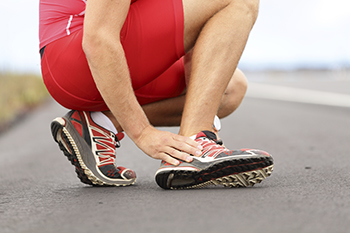
Ankle pain, while initially thought of as an issue for athletes, can affect anyone at anytime. Simple, everyday activities, such as walking or running on an uneven surface, have the possibility of causing serious harm to one’s ankle. That is, however, not to discount athletic injuries; in fact, half of all ankle sprains are inflicted during an athletic activity. The most common causes of ankle injuries include tripping or falling, landing awkwardly after jumping, a sudden impact such as a car crash, or twisting, rolling, and rotating of the ankle.
Some signs that point to the potential of an ankle injury include pain towards the affected area, swelling, bruising, or an inability to walk or bear weight on the affected area. You may also notice an increase in the height of the arch of the inflicted foot. In order to understand why the injury occurred, a podiatrist will often question the patient about the events leading up to their ankle discomfort. An x-ray of the leg or foot may also be performed to discover what’s harming the ankle.
There are many different types of ankle injuries, such as ankle sprains, fractures, strains, and tendonitis. To relieve discomfort caused by these conditions, it’s recommended to get plenty of rest, use ice to reduce swelling and ease pain, compress the injured ankle by wrapping it for support, and elevate the ankle to reduce swelling.
If you or someone you know is experiencing pain or discomfort in the ankle region, seek out the help of a podiatrist for a proper diagnosis and treatment regime.
